Editorial: Jony Ive's departure opens up an opportunity for Apple to think differently
The news that Jony Ive is leaving his Chief Design Officer position at Apple has fueled predictable handwringing. But while Ive's three decades of work at Apple put him at the top of a short list of "the world's most famous product designers," the company isn't facing a "crisis of design," but rather an opportunity.
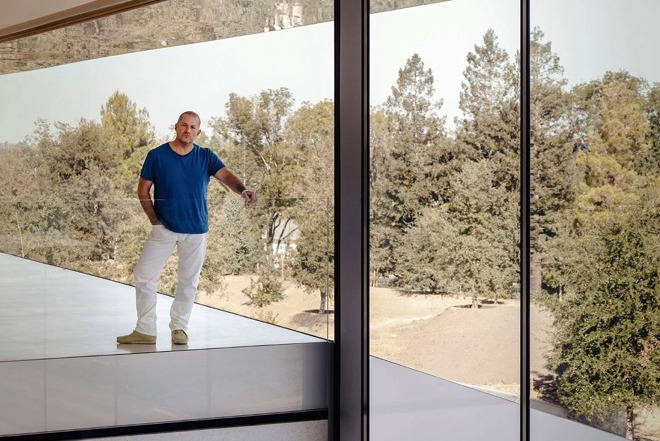
Jony Ive at his biggest design project: Apple Park. Source: Wallpaper
In a 1985 interview published by Playboy, a young Steve Jobs-- who was three months away from being pushed out of Apple-- was asked why the computer field was dominated by young people. The average age of Apple employee was at the time 29. Jobs remarked that "it's rare that you see an artist in his 30s or 40s able to really contribute something amazing."
Yet Jobs himself-- along with Apple's current executive team including its chief executive Tim Cook, Craig Federighi in software, Johny Srouji in silicon, and Jeff Williams in operations-- all continued to contribute "amazing" work well into their fifties. Ive is now 52, and broadly respected for having lead the design of not just Apple's products, but effectively also those of Samsung, Huawei, Microsoft, and Google, which have all aped Apple's products shamelessly.
The 2007 design of iPhone, which Ive led at 40, was so "amazing" that Samsung internally freaked out about its "unexpected competitor" and pondered its own "crisis of design," while launching an initiative to copy every last bit of it as closely as possible.
Outside of Jobs controversial "agist" quote, the full answer that his 30-year-old self gave Playboy provides some insight into why Ive's departure as Apple's Chief Design Officer today might be more than just an independent, creative outlet for Ive. It could open up opportunities for Apple to creatively rethink how it designs its products.
"It's often the same with any new, revolutionary thing," Jobs said. "People get stuck as they get older. Our minds are sort of electrochemical computers. Your thoughts construct patterns like scaffolding in your mind. You are really etching chemical patterns. In most cases, people get stuck in those patterns, just like grooves in a record, and they never get out of them. It's a rare person who etches grooves that are other than a specific way of looking at things, a specific way of questioning things."
But Apple's success is not a matter of having created iconic product designs. That's something most members of the tech media do not understand, mostly because they are purposely spoonfed a design-heavy marketing message by Apple. That often leads to the misunderstanding that all a competitor needs to do to beat Apple is to design a clever product and announce that it's on sale.
Design has been prominently featured at Apple from the beginning. Jobs consulted with designer Jerry Manock in 1977, soon after founding Apple, and hired him to build the Apple Industrial Design Group tasked with developing iconic designs for Apple's computers. The company pioneered a distinguished focus on how its computers looked at a time when most PCs were just shipped in a simplistic sheet metal shell. The iconic designs of the Apple II, III, Lisa, and Macintosh were original and uniquely crafted to make a statement. Yet only two of those early product lines were successful, despite all that design work.
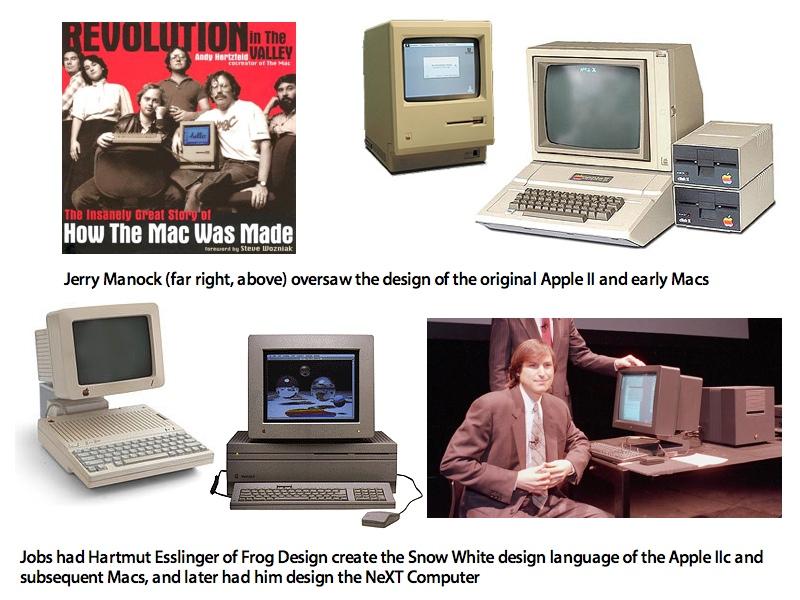
Apple's reverent focus on design involved a series of famous designers including Hartmut Esslinger of Frog Design, followed Apple's internal industrial design director Robert Brunner, who recruited Ive in 1992.
Throughout Apple's Golden Age and into its "Beleaguered Era" of the mid-'90s, this resulted in a series of handsome products, although many of them were commercially insignificant, from printers to CD players to QuickTake cameras, and the Newton MessagePad.

Ive's work at Apple began in 1992, just as the company's Golden Age began to fall apart. His thoughtful work to improve the Newton MessagePad 110-- his first assignment-- ended up being largely irrelevant because that product didn't do anything strategically or commercially significant for Apple. A series of other products he took the lead in developing over the 90s, including the Twentieth Anniversary Mac, were just as immaterial.
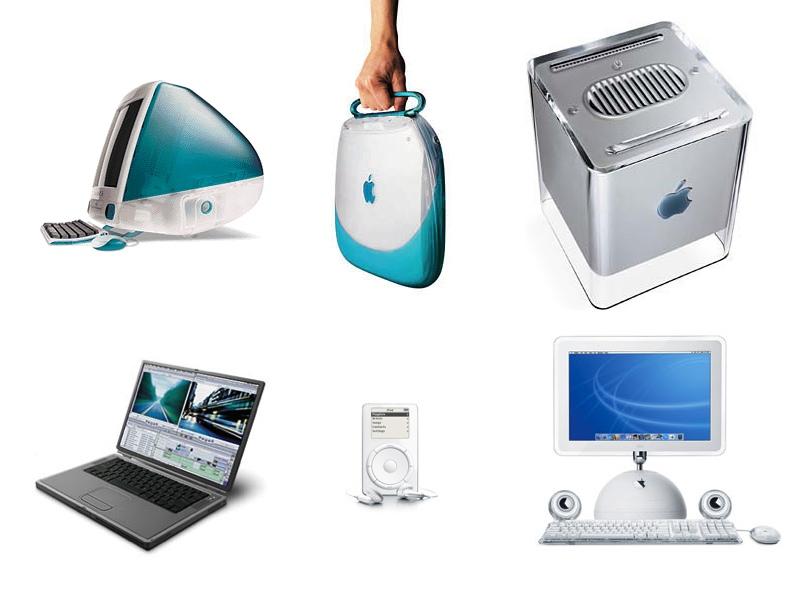
Ive's iconic designs of the 2000s wouldn't have mattered without fresh operational competence
Steve Jobs's efforts to rebuild Apple in 1997 certainly emphasized an attention to design, with captivating products like the translucent iMac and cleverly simple iPod, but design wasn't the primary reason why Apple survived and thrived in its rebounding era of plastic fashion in the 2000s. It was operations, not design.
Apple is an operations company. Operations, not design, is what drove Apple to success and made it the leader in consumer tech. Operations drove sustainable profitability, paid for research and development, funded expansion, and broke into new product markets and segments such as enterprise sales.
Apple's genius-level mastery of operations is what has allowed the company to spend so much extra time and resources on perfecting design as an essential part of its products, differentiating Apple from its peers.
Apple could have been just as successful with slightly goofier product design-- Microsoft did fine in the 90s-- but without competent operations, Apple would never have escaped its beleaguerment and lack of relevance to become something great with the power to really change the world.
Having beautiful product designs didn't save Apple in the 90s, and it wasn't the driver of its rebound in the 2000s nor its spectacular supernova of expansion over the past decade. Apple's designs have certainly given bloggers things to talk about, but there's been at least as much chat online focused on Ive's worst designs-- the placement of a charging port or some other niggle-- as there has been a real appreciation for the depth of design-focused thought that actually goes into every product.
Instead, the variable that changed at Apple was new, functional leadership with the courage to say "no," supplied by the return of Jobs, and the tight, relentless competence of its often invisible chief operations officer Tim Cook across the 2000s.
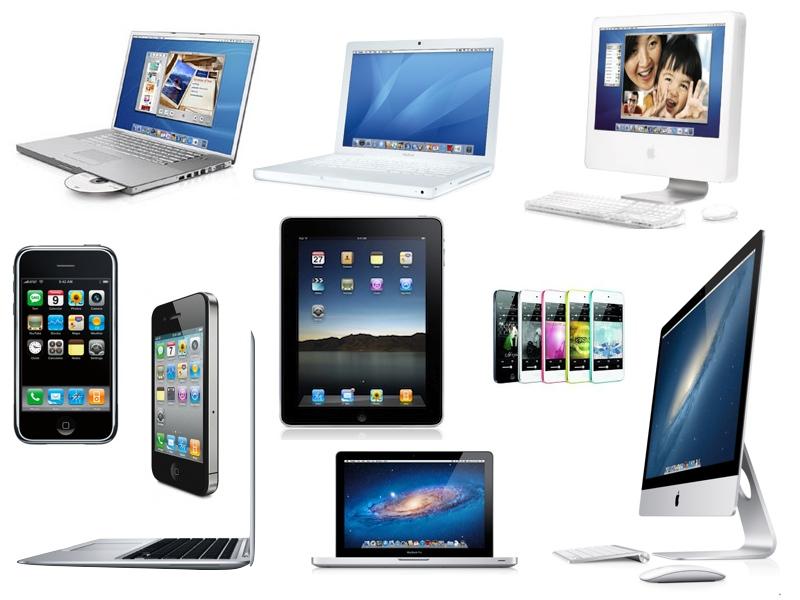
Ive's released designs don't include things the company said "no" to
Apple's biggest problems in the mid-'90s did not involve a deficiency in design. In fact, excessive design was becoming a problem. There were too many different products and too much effort being spent on vanity design-- like the TAM, which sold in the mere tens of thousands.
Jobs quite famously slashed away projects with little immediate potential that were simply distractions-- like Newton tablets that demonstrated Apple's first use of translucent plastics. He also worked to replace Apple's unfocused, poorly administrated software development with a strong roadmap setting ambitious targets for new releases.
In parallel, Cook radically changed Apple's operational structure, erasing the inefficient warehouses that siloed inventories of Apple's high tech gear as it figuratively rotted on the vine, at incredible cost. Apple's new operational efficiency enabled it to introduce new waves of rapidly iterating iPods, maintaining consumers attention and keeping them satisfied.
In parallel, Microsoft spent tons of money on design and marketing for Zune, but couldn't efficiently produce it. Sony had attractive designs, but was just as bad and getting them produced and sold efficiently. More recently, the tech media has given standing ovations to Google Pixel and Microsoft Surface, completely unaware that the reason they aren't successful has nothing to do with design and everything to do with operational incompetence.
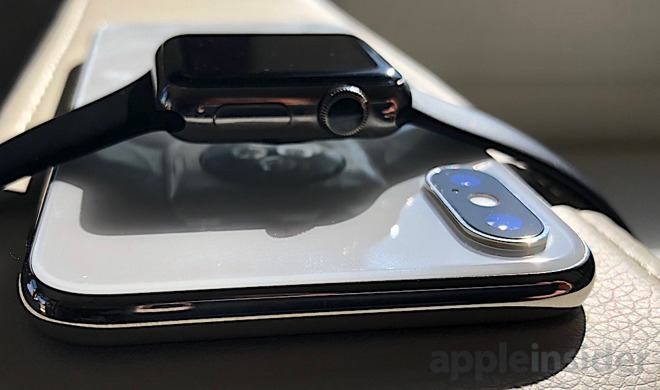
Apple's designs weren't the products of a single person
Jobs himself was tightly associated with the release of iMac, iPod, iPhone, and iPad, but he didn't develop or design those products. He guided Apple strategically, with a uniquely intuitive grasp on where technology could go in order to make the most impact. iPod was operationally driven by the opportunity for selling a music player just as behaviors were shifting and new technologies were emerging, not by somebody sketching up a cute design for a new box.
In the same way that Ive practiced his design talents at Apple in both eras of failure and success, Jobs applied his intuition to shape the development of the original Macintosh, but then left to create NeXT where he was unable actually bring his technology to the mass market. It was only when he returned to Apple that he was again able to guide the delivery of a series of world-shifting hits.
The reason for both is the same: Apple brought together an executive team of competence that kept correcting its own course, incrementally driving forward while learning from the past. When Jobs died, there was extreme consternation that he alone was capable of providing the vision for the future of Apple. But Jobs left behind an organizational structure, competent leaders, and a mindset driven by Apple U, its unique training program that emphasizes learning how to learn.
Jobs didn't make himself out to be the reason Apple was delivering great products. At media events, he would have Apple's teams of engineers stand up to be acknowledged for all of their various contributions. Similarly, Ive no doubt feels pretty confident that his former team at Apple can survive without him, or he likely wouldn't have exercised the privilege of leaving to focus on his own personal interests.
After Jobs passed, Apple changed in ways that Jobs likely would not have allowed as its chief executive. It canned Scott Forstall, a Jobs favorite, because he was too difficult to work with in a team. It stripped away the excessive skeuomorphic software design that Jobs loved but which was getting boring and becoming a technical impediment to progress. Apple introduced both a smaller iPad and a larger iPhone-- both ideas Jobs appeared resistant to-- and Cook increasingly reached out to corporate enterprise, a market Jobs appeared to personally any lose interest in after his experiences at the old Apple and at NeXT.
Yet at the same time, Jobs would have wanted those changes to occur. At Apple's memorial service for Jobs, Cook noted to employees that Jobs' last advice "was to never ask what he would do. Just do what's right." Jobs specifically wanted Apple to avoid falling into the trap that Disney had after its founder died, where "everyone spent all their time thinking and talking about what Walt would do."
So rather than trying to pretend to be Jobs by introducing something as close to another iPod as possible, after Cook assumed control of Apple as its chief executive, he presided over the team that reinvented the dying iPod as the brand new Apple Watch. It looked nothing like Jobs had ever introduced. It featured luxurious materials and a focused on health and sport-- all things that drove Cook personally. Cook wasn't following Jobs, he was following Jobs mindset of 'following your own intuition.'
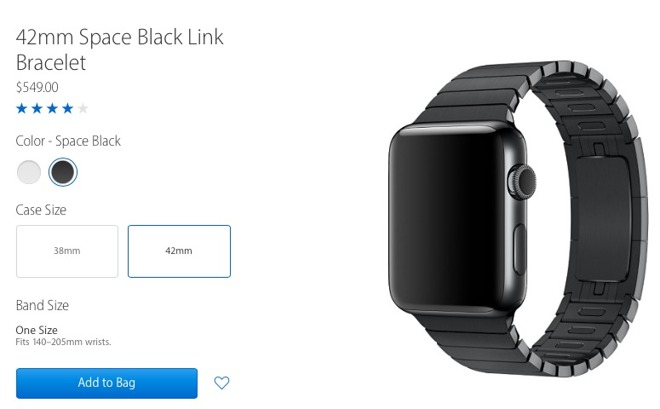
Apple effectively replaced its iPods selling for $129 with Apple Watch, selling at around $350, outfitted with bands that can cost more than an Mac mini, and tethered wirelessly to $160 AirPods
Ive's group designed Apple Watch, but much of the user interface Ive himself attributed to Alan Dye. It was such a big project that Apple brought in entirely new talent to manage it, from what appeared to be an unlikely source-- Kevin Lynch, the former chief technology officer of Adobe.
Lynch had staunchly defended Adobe Flash back when Jobs was tearing it down as bad technology. Now, Lynch was tasked with building the change agent that would replace Jobs' decade-old, dying iPod and reincarnate it as a much more powerful, versatile, fashionable, and commercially successful product.
John Gruber of the Daring Fireball was quick to announce his opinion that Lynch was "a Bozo, a Bad Hire." Today, Gruber similarly took issue with the organizational structure replacing Ive, writing that it "makes no sense to me" that Apple's Design team leaders Evans Hankey, vice president of Industrial Design, and Dye, now vice president of Human Interface Design, "will report to Jeff Williams, Apple's chief operating officer," as Apple announced.
But Apple is not a company driven by the design taste of one man, even if most people initially thought that about Jobs, or are today watching Apple's marketing videos and can pick out the iconic voice and face of Ive as he eruditely gushes over the depth of thought that went into every corner of a new product.
It completely makes sense that hardware industrial design and human interface software design would collaborate with operations, which orchestrates all of the details of creating and producing a product, rather than being run past the chief executive, who has other things on his plate besides deciding what corner radius a bezel should have.
When your goal is to make things that are just incredibly beautiful, as Ive clearly is, you eventually get stuck in the groove you've always etched. Ive's non-Apple designs reflect the same, extremely talented but narrow view of design as being sleek and minimal.
Like the 2013 Mac Pro, Ive's notable errors reflect a preoccupation with beauty that eclipses functionality. His worst work is in building mice that are refined down their most basic design elements until they are just really shitty to use. Perhaps a fresh approach would create an entirely new kind of pointer that worked exceptionally well, even if it didn't look like a beautiful mouse at all.

Reductio ad absurdum
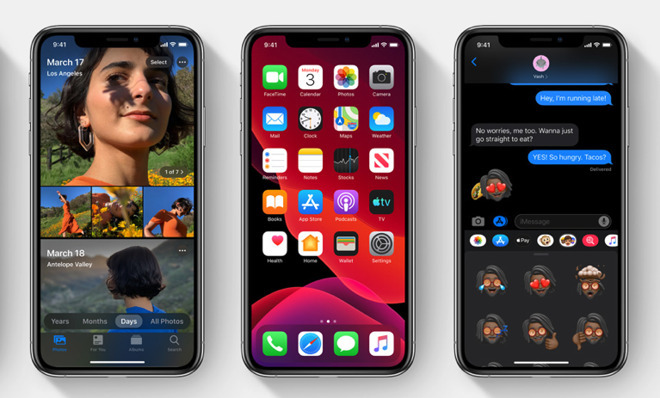
Now that iPhone is just a panel of glass, its most important design changes going forward will be software
Similarly, the most of the immediate future of the Mac will be delivered by improvements to silicon, battery, and software, not in radically changing the design of notebooks or the outlines of iMacs, which have similarly achieved an iPhone X-level 'pinnacle of design' that doesn't demand a dramatic modernization.
New generations of AirPods, Apple Watches, and other wearables will similarly require competent product designers, but will mostly demand a frantic pace of new silicon and software development. With all of Apple's product lineup looking maturely finished, it's easy to see why Ive would be interested in moving on rather than sticking around iterating tweaks on machines that will be mostly advanced under the skin over the next few years.
Yet Ive's departure could also enable Apple to relax some of its strictly minimal design decisions that have clearly originated with Ive. I don't mean that Apple should build thick laptops and fat phones. I mean that Apple could introduce new tiers of alternatively branded products the way that carmakers have.
I once imagined that Apple could sell a "Pro" brand of luxury class iPhones and Macs, but that actually ended up the only thing Apple did. Apple's entry-level product across its portfolio is simply last year's product, or second hard refurbished models. This has worked out really well, and given Apple products a long life span and a revered brand. However, the departure of Ive could give the company the opportunity to rethink this strategy.
Apple could increasingly partner with brands like Nike to build sport-optimized mobile products and adventure-class, ruggedized notebooks. It could create a subsidiary brand similar to Beats that specialized in phones, wearables, and computers for older people, with easy to read text defaults, hearing aid integration, and other accessibility-focused features.
It could design a brand of products specifically built for kids, similar in intent to iPhone XR, with less expensive components, more colors and accessories, and features tailored to a youth audience: customizability and drop resistance that's an improvement over today's beautiful but wildly fragile Ive-Apple designs.
Ive's Apple designs have always been very on brand, marching from white boxes to translucent plastics to luxurious glass. But there has rarely been much of a range offered at any one time. By crafting multiple brands targeting specific demographics, Apple could expand downmarket and in emerging markets, as well as targeting demographic niches.
But whatever Apple does, it should take Jobs' advice and not just try to perpetuate Ive's designs, but rather simply continue to pursue excellent industrial design by hiring the best people who intuitively know what do next, because they feel it's right.

Jony Ive at his biggest design project: Apple Park. Source: Wallpaper
In a 1985 interview published by Playboy, a young Steve Jobs-- who was three months away from being pushed out of Apple-- was asked why the computer field was dominated by young people. The average age of Apple employee was at the time 29. Jobs remarked that "it's rare that you see an artist in his 30s or 40s able to really contribute something amazing."
Yet Jobs himself-- along with Apple's current executive team including its chief executive Tim Cook, Craig Federighi in software, Johny Srouji in silicon, and Jeff Williams in operations-- all continued to contribute "amazing" work well into their fifties. Ive is now 52, and broadly respected for having lead the design of not just Apple's products, but effectively also those of Samsung, Huawei, Microsoft, and Google, which have all aped Apple's products shamelessly.
The 2007 design of iPhone, which Ive led at 40, was so "amazing" that Samsung internally freaked out about its "unexpected competitor" and pondered its own "crisis of design," while launching an initiative to copy every last bit of it as closely as possible.
Outside of Jobs controversial "agist" quote, the full answer that his 30-year-old self gave Playboy provides some insight into why Ive's departure as Apple's Chief Design Officer today might be more than just an independent, creative outlet for Ive. It could open up opportunities for Apple to creatively rethink how it designs its products.
"It's often the same with any new, revolutionary thing," Jobs said. "People get stuck as they get older. Our minds are sort of electrochemical computers. Your thoughts construct patterns like scaffolding in your mind. You are really etching chemical patterns. In most cases, people get stuck in those patterns, just like grooves in a record, and they never get out of them. It's a rare person who etches grooves that are other than a specific way of looking at things, a specific way of questioning things."
Apple is not a design company
Apple takes product design very seriously. It dramatically emphasizes its design decisions at product Events for the media and in its marketing. There's clearly considerable thought that goes into how Apple's iPhones, MacBooks, and other products look and how they work.But Apple's success is not a matter of having created iconic product designs. That's something most members of the tech media do not understand, mostly because they are purposely spoonfed a design-heavy marketing message by Apple. That often leads to the misunderstanding that all a competitor needs to do to beat Apple is to design a clever product and announce that it's on sale.
Design has been prominently featured at Apple from the beginning. Jobs consulted with designer Jerry Manock in 1977, soon after founding Apple, and hired him to build the Apple Industrial Design Group tasked with developing iconic designs for Apple's computers. The company pioneered a distinguished focus on how its computers looked at a time when most PCs were just shipped in a simplistic sheet metal shell. The iconic designs of the Apple II, III, Lisa, and Macintosh were original and uniquely crafted to make a statement. Yet only two of those early product lines were successful, despite all that design work.

Apple's reverent focus on design involved a series of famous designers including Hartmut Esslinger of Frog Design, followed Apple's internal industrial design director Robert Brunner, who recruited Ive in 1992.
Throughout Apple's Golden Age and into its "Beleaguered Era" of the mid-'90s, this resulted in a series of handsome products, although many of them were commercially insignificant, from printers to CD players to QuickTake cameras, and the Newton MessagePad.

Ive's work at Apple began in 1992, just as the company's Golden Age began to fall apart. His thoughtful work to improve the Newton MessagePad 110-- his first assignment-- ended up being largely irrelevant because that product didn't do anything strategically or commercially significant for Apple. A series of other products he took the lead in developing over the 90s, including the Twentieth Anniversary Mac, were just as immaterial.

Ive's iconic designs of the 2000s wouldn't have mattered without fresh operational competence
Steve Jobs's efforts to rebuild Apple in 1997 certainly emphasized an attention to design, with captivating products like the translucent iMac and cleverly simple iPod, but design wasn't the primary reason why Apple survived and thrived in its rebounding era of plastic fashion in the 2000s. It was operations, not design.
Apple is an operations company. Operations, not design, is what drove Apple to success and made it the leader in consumer tech. Operations drove sustainable profitability, paid for research and development, funded expansion, and broke into new product markets and segments such as enterprise sales.
Apple's genius-level mastery of operations is what has allowed the company to spend so much extra time and resources on perfecting design as an essential part of its products, differentiating Apple from its peers.
Apple could have been just as successful with slightly goofier product design-- Microsoft did fine in the 90s-- but without competent operations, Apple would never have escaped its beleaguerment and lack of relevance to become something great with the power to really change the world.
Apple's legendary turnaround was operational, not ornamental
The key to Apple's millennial rebound hinged largely upon product management and operational control, not on designing beautiful and iconic products that any competent team of designers could have drawn up. That's clearly evident because Ive's talent, in particular, spanned both Apple's leanest years and its fattest.Having beautiful product designs didn't save Apple in the 90s, and it wasn't the driver of its rebound in the 2000s nor its spectacular supernova of expansion over the past decade. Apple's designs have certainly given bloggers things to talk about, but there's been at least as much chat online focused on Ive's worst designs-- the placement of a charging port or some other niggle-- as there has been a real appreciation for the depth of design-focused thought that actually goes into every product.
Instead, the variable that changed at Apple was new, functional leadership with the courage to say "no," supplied by the return of Jobs, and the tight, relentless competence of its often invisible chief operations officer Tim Cook across the 2000s.

Ive's released designs don't include things the company said "no" to
Apple's biggest problems in the mid-'90s did not involve a deficiency in design. In fact, excessive design was becoming a problem. There were too many different products and too much effort being spent on vanity design-- like the TAM, which sold in the mere tens of thousands.
Jobs quite famously slashed away projects with little immediate potential that were simply distractions-- like Newton tablets that demonstrated Apple's first use of translucent plastics. He also worked to replace Apple's unfocused, poorly administrated software development with a strong roadmap setting ambitious targets for new releases.
In parallel, Cook radically changed Apple's operational structure, erasing the inefficient warehouses that siloed inventories of Apple's high tech gear as it figuratively rotted on the vine, at incredible cost. Apple's new operational efficiency enabled it to introduce new waves of rapidly iterating iPods, maintaining consumers attention and keeping them satisfied.
In parallel, Microsoft spent tons of money on design and marketing for Zune, but couldn't efficiently produce it. Sony had attractive designs, but was just as bad and getting them produced and sold efficiently. More recently, the tech media has given standing ovations to Google Pixel and Microsoft Surface, completely unaware that the reason they aren't successful has nothing to do with design and everything to do with operational incompetence.
The legendary heros who were actually teams
The organizational focus of Jobs and Cook that took Apple from "90s beleaguered" to "2000's plastic" to its current era of affordable luxury embodied in glass and aluminum wasn't just two men sitting around making brilliant decisions. It required teams of competent, organized people. Similarly, Apple's design group is also not just one person drawing out plans for China to build-- it's teams of competent people collaborating together.
Apple's designs weren't the products of a single person
Jobs himself was tightly associated with the release of iMac, iPod, iPhone, and iPad, but he didn't develop or design those products. He guided Apple strategically, with a uniquely intuitive grasp on where technology could go in order to make the most impact. iPod was operationally driven by the opportunity for selling a music player just as behaviors were shifting and new technologies were emerging, not by somebody sketching up a cute design for a new box.
In the same way that Ive practiced his design talents at Apple in both eras of failure and success, Jobs applied his intuition to shape the development of the original Macintosh, but then left to create NeXT where he was unable actually bring his technology to the mass market. It was only when he returned to Apple that he was again able to guide the delivery of a series of world-shifting hits.
The reason for both is the same: Apple brought together an executive team of competence that kept correcting its own course, incrementally driving forward while learning from the past. When Jobs died, there was extreme consternation that he alone was capable of providing the vision for the future of Apple. But Jobs left behind an organizational structure, competent leaders, and a mindset driven by Apple U, its unique training program that emphasizes learning how to learn.
Jobs didn't make himself out to be the reason Apple was delivering great products. At media events, he would have Apple's teams of engineers stand up to be acknowledged for all of their various contributions. Similarly, Ive no doubt feels pretty confident that his former team at Apple can survive without him, or he likely wouldn't have exercised the privilege of leaving to focus on his own personal interests.
Life's change agent
Jobs himself noted that "death is very likely the single best invention of life. It is life's change agent."After Jobs passed, Apple changed in ways that Jobs likely would not have allowed as its chief executive. It canned Scott Forstall, a Jobs favorite, because he was too difficult to work with in a team. It stripped away the excessive skeuomorphic software design that Jobs loved but which was getting boring and becoming a technical impediment to progress. Apple introduced both a smaller iPad and a larger iPhone-- both ideas Jobs appeared resistant to-- and Cook increasingly reached out to corporate enterprise, a market Jobs appeared to personally any lose interest in after his experiences at the old Apple and at NeXT.
Yet at the same time, Jobs would have wanted those changes to occur. At Apple's memorial service for Jobs, Cook noted to employees that Jobs' last advice "was to never ask what he would do. Just do what's right." Jobs specifically wanted Apple to avoid falling into the trap that Disney had after its founder died, where "everyone spent all their time thinking and talking about what Walt would do."
So rather than trying to pretend to be Jobs by introducing something as close to another iPod as possible, after Cook assumed control of Apple as its chief executive, he presided over the team that reinvented the dying iPod as the brand new Apple Watch. It looked nothing like Jobs had ever introduced. It featured luxurious materials and a focused on health and sport-- all things that drove Cook personally. Cook wasn't following Jobs, he was following Jobs mindset of 'following your own intuition.'

Apple effectively replaced its iPods selling for $129 with Apple Watch, selling at around $350, outfitted with bands that can cost more than an Mac mini, and tethered wirelessly to $160 AirPods
Ive's group designed Apple Watch, but much of the user interface Ive himself attributed to Alan Dye. It was such a big project that Apple brought in entirely new talent to manage it, from what appeared to be an unlikely source-- Kevin Lynch, the former chief technology officer of Adobe.
Lynch had staunchly defended Adobe Flash back when Jobs was tearing it down as bad technology. Now, Lynch was tasked with building the change agent that would replace Jobs' decade-old, dying iPod and reincarnate it as a much more powerful, versatile, fashionable, and commercially successful product.
John Gruber of the Daring Fireball was quick to announce his opinion that Lynch was "a Bozo, a Bad Hire." Today, Gruber similarly took issue with the organizational structure replacing Ive, writing that it "makes no sense to me" that Apple's Design team leaders Evans Hankey, vice president of Industrial Design, and Dye, now vice president of Human Interface Design, "will report to Jeff Williams, Apple's chief operating officer," as Apple announced.
But Apple is not a company driven by the design taste of one man, even if most people initially thought that about Jobs, or are today watching Apple's marketing videos and can pick out the iconic voice and face of Ive as he eruditely gushes over the depth of thought that went into every corner of a new product.
It completely makes sense that hardware industrial design and human interface software design would collaborate with operations, which orchestrates all of the details of creating and producing a product, rather than being run past the chief executive, who has other things on his plate besides deciding what corner radius a bezel should have.
The 'designing a better mouse' trap
Ive has been consumed for much of the past decade with the details of Apple Park. Over that same period, he helped drive the design-focused Mac Pro of 2013, a beautiful machine with an iconic, sleek, original design that didn't really fit the needs of its target market at all. Contrast that with the new Mac Pro that debuted at WWDC19, which looks like it was designed by Sun or perhaps Dell's Alienware, with a focus on performance and functionality that eclipses its intelligent but utilitarian design.When your goal is to make things that are just incredibly beautiful, as Ive clearly is, you eventually get stuck in the groove you've always etched. Ive's non-Apple designs reflect the same, extremely talented but narrow view of design as being sleek and minimal.
Like the 2013 Mac Pro, Ive's notable errors reflect a preoccupation with beauty that eclipses functionality. His worst work is in building mice that are refined down their most basic design elements until they are just really shitty to use. Perhaps a fresh approach would create an entirely new kind of pointer that worked exceptionally well, even if it didn't look like a beautiful mouse at all.

Reductio ad absurdum
Where do you go next from the peak?
Apple's latest iPhones are sleekly beautiful, with a deeply considered design that 'achieves its original vision' of a full-face display. The future of iPhone designs will be charted out largely by technology advances-- erasing physical ports with wireless, adding increasingly better cameras and sensor technologies -- not by needing to fundamentally redesign their form to clear away archaic design elements. iPhone X already did that two years ago.
Now that iPhone is just a panel of glass, its most important design changes going forward will be software
Similarly, the most of the immediate future of the Mac will be delivered by improvements to silicon, battery, and software, not in radically changing the design of notebooks or the outlines of iMacs, which have similarly achieved an iPhone X-level 'pinnacle of design' that doesn't demand a dramatic modernization.
New generations of AirPods, Apple Watches, and other wearables will similarly require competent product designers, but will mostly demand a frantic pace of new silicon and software development. With all of Apple's product lineup looking maturely finished, it's easy to see why Ive would be interested in moving on rather than sticking around iterating tweaks on machines that will be mostly advanced under the skin over the next few years.
Yet Ive's departure could also enable Apple to relax some of its strictly minimal design decisions that have clearly originated with Ive. I don't mean that Apple should build thick laptops and fat phones. I mean that Apple could introduce new tiers of alternatively branded products the way that carmakers have.
I once imagined that Apple could sell a "Pro" brand of luxury class iPhones and Macs, but that actually ended up the only thing Apple did. Apple's entry-level product across its portfolio is simply last year's product, or second hard refurbished models. This has worked out really well, and given Apple products a long life span and a revered brand. However, the departure of Ive could give the company the opportunity to rethink this strategy.
Apple could increasingly partner with brands like Nike to build sport-optimized mobile products and adventure-class, ruggedized notebooks. It could create a subsidiary brand similar to Beats that specialized in phones, wearables, and computers for older people, with easy to read text defaults, hearing aid integration, and other accessibility-focused features.
It could design a brand of products specifically built for kids, similar in intent to iPhone XR, with less expensive components, more colors and accessories, and features tailored to a youth audience: customizability and drop resistance that's an improvement over today's beautiful but wildly fragile Ive-Apple designs.
Ive's Apple designs have always been very on brand, marching from white boxes to translucent plastics to luxurious glass. But there has rarely been much of a range offered at any one time. By crafting multiple brands targeting specific demographics, Apple could expand downmarket and in emerging markets, as well as targeting demographic niches.
But whatever Apple does, it should take Jobs' advice and not just try to perpetuate Ive's designs, but rather simply continue to pursue excellent industrial design by hiring the best people who intuitively know what do next, because they feel it's right.





Comments
Also I don't understand how the departure of Ive relates to Apple's targeting or not targeting "demographic niches".
No, Apple has always happily ceded the “downmarket” to its competitors. By doing so, Apple sidesteps claims of monopolistic business behavior while remaining highly profitable and maintaining its reputation for quality, consumer satisfaction, and yes, careful attention to detail and design.
But then enter people's habits and muscle memory... Just like today's users stroking their keyboards to the extreme because mechanical typewriter keys had a long travel path, the users of that mouse were trying to "grab" or "catch" it to the extreme, because they were used to PCs' brick size mice. You don't grab that mouse, you don't hold it in the palm of your hand, it moves freely under your fingers. Your wrist rests on the table, then your fingers move to drive the mouse: a way to prevent carpal tunnel syndrome because your wrist is not elevated. It is one of Ive's most clever creations not appreciated by the "clients"... But, that's business, ingratitude is part of it.
The new Mac Pro is a great example of designing to make it work better.
Not that looks don’t matter.... I’ll always prefer the better looking among equally functional devices. But sometimes Ive seemed to sacrifice functionality in order to achieve an aesthetic and I hope that happens less now.
Design aesthetic will always be part of the mystique of Apple. Ugly doesn’t cut it. The camera setup of the mockups we see for the new iPhone is an example of something ugly, even if it is an advance in capability. Thickening the phone slightly to remove the horrendous bump and using the space for added battery or some innovation would be better.
This obsession has undermined a number of key Apple products, such as the MacBook which suffers from an ultra shallow keyboard with no travel, a lack of ports and the mystifying removal of MagSafe. It is also very difficult to comprehend how Apple can charge $1,000 for a computer stand.
Whoever steps into Ive’s shoes needs to strike a better balance between design purity and functionality.
Apple brought fashion to technology for the first time, making multi-colored iMacs as natural as any other product designed for the masses.
For many non tech people MacWorld was a preview of what computers would look like going forward. Colors, materials, form factors which were in theory chosen for fan less cooling were made in clear plastic to delight the eye as much as the experience.
Jobs was a "minimalist" through and through. Design should be efficient and its beauty is in editing of decoration to reveal the bare essentials.
This is one fo the hardest things to do in any field of design.
Apple is a tech company but a consumer company first. Apple's future depends on leading not only in great technology but a continued focus on ease of use and appealing, functional designs. I believe as with the successful great fashion houses who have lost their founder Apple will continue to evolve along design phillosphy of the Jobs / Ive era. The trick will be to walk the tightrope of the Apple aesthetic with our changing demands on technology.
I think of one the issues Apple and other tech giants have is new technology is just too expensive to implement for consumer devices.
You can bet that there are many cool new products that Apple has created that are waiting on a shelf somewhere for the cost of its technology to come down.
The keyboard, love it or hate it, isn’t mandated by the thin MBs; other equally thin notebooks have different keyboards.
Lack of ports? They have ports, they just settled into USBC, which is small and versatile — exactly what is needed on a portable.
Removing MagSafe isn’t a mystery in the slightest. MBs get 10 hours of battery, like an iPad. They charge from USBC, so having a dedicated port and internal space for something not needed like it once was is silly.
Get a Dell, dude.
What is this gibberish? Are you suggesting Ive, and not physical engineering constraints, was responsible for a notch being needed to house the array of sensors?
The X is an excellent device, and I wouldn’t go back to one before it.
I’ll be glad when the dust settles and everyone slithers away.